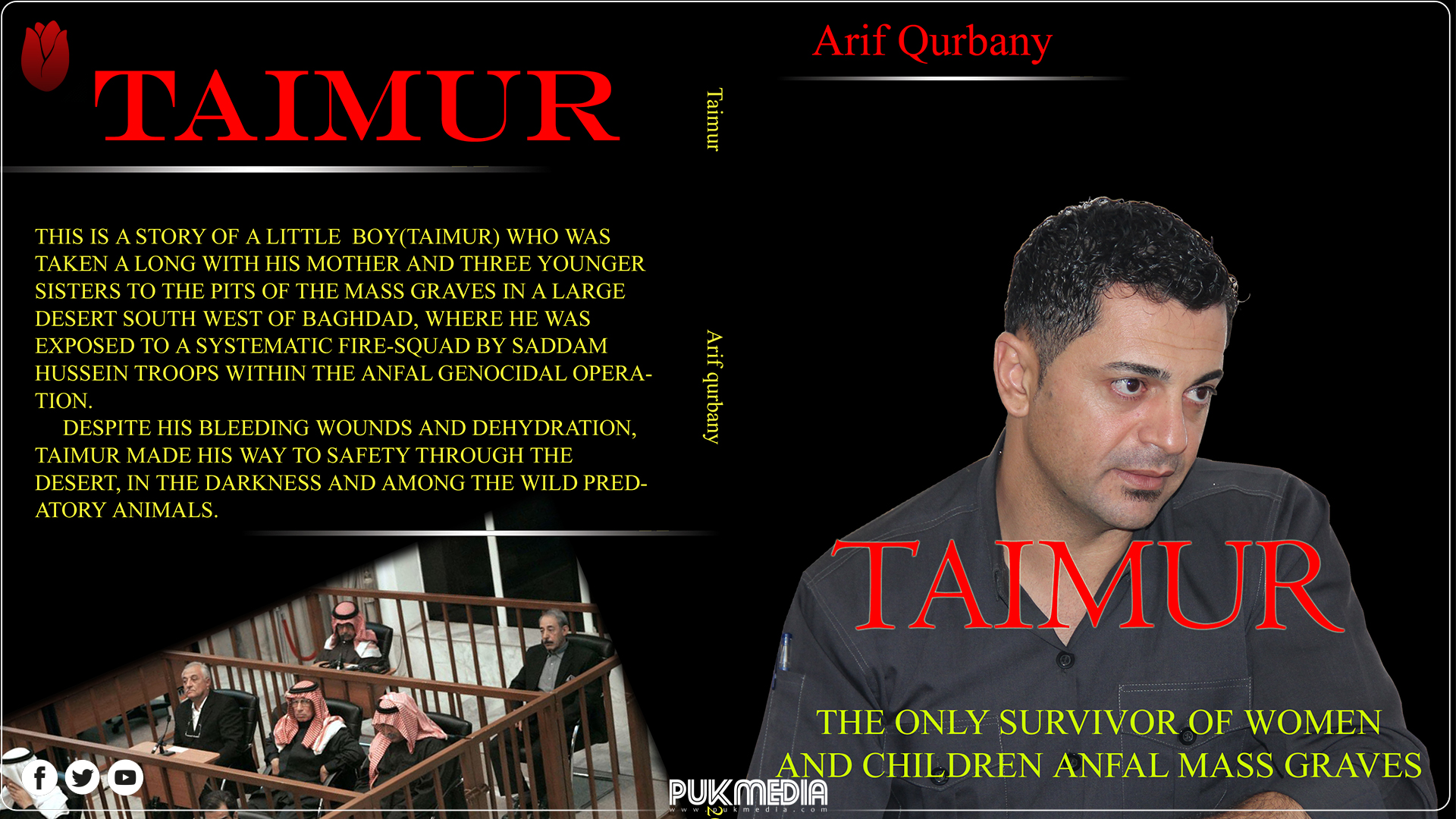Timur: The only survivor of women and children Anfal mass graves
Books 03:53 PM - 2021-11-13
'Timur: The only survivor of women and children Anfal mass graves' is one of the Kurdish writer Arif Qurbany's collection of books on the genocide of the Kurds by the notorious Baath regime.
The book has been translated to English by the Kurdish writer and academic Abdulkarim Uzeri.
On his journey to look for information, documents, and evidence to write his book on the Anfal Campaign, Arif Qurbany came across a man who has witnessed almost all the atrocities that happened to the Kurds.
The man's name is Timur. He was the only one in his family to survive Anfal crime.
At the time, Ahmed, his parents, and sisters were living in Kulajo, a remote village of some 110 people, who were all part of the same extended family.
The Baath regime's campaigns against the Kurdish people were numerous and included a wide range of crimes.
The campaigns started with the Arabization of inhabited areas in the southern part of Kurdistan including Kirkuk city and several towns like Khanaqin, Makhmur, and Shengal. The original Kurdish inhabitants were forced out of their homes without being allowed to take their basic necessities, while the Arabs who occupied these houses received them for free, over and above the fact that they had already been given cash as an inducement to reside in Kurdistan.
Villagers were rounded up and taken to a military camp where the men were separated from the women and children. The women and children - some of them were babies in their mothers' arms - were forced out of the trucks and then shot into the pits.
A bullet hit Taimur in his left arm, but he miraculously survived and played dead until the soldiers left. He then managed to get out from among the bodies and escape into the night.
He eventually came to the tent of an Arab Bedouin family who looked after him. He stayed with them for three years until he made contact with one of his few surviving relatives and moved back to the north, where he still had to hide from the authorities.
In 1996 he was granted asylum in the US where he now lives.
In 1983, eight thousand young men were rounded up at gunpoint and taken to some unknown destinations in the south of Iraq. Thereafter, they all disappeared, and even foreign diplomatic efforts have failed to trace a single person.
Reports from Iraqi military sources indicate that they were used as guinea pigs to test the effects of various chemical agents.
Another horrific feature of the Iraqi campaign was the regime's resorting to chemical weapons against civilian populations!
On April 16, 1987, a chemical attack on the Balisan valley near Erbil killed dozens of civilians. On March 16, 1988, a sustained chemical attack was launched on Halabja, where roughly 5 thousand civilians died and many more thousands were seriously injured.
The largest genocide committed against the Iraqi Kurds by Saddam Hussein's regime was in 1988 which was one of the most systematic mass killings.
Although 182,000 victims have been documented, there are tens of thousands of victims who have not been recorded: the unnamed newborn infants, the unborn children of pregnant mothers, the many people who were shot and killed by the infantry and the air force as they escaped on foot and those who died by starvation and diseases.
The author dedicated his book to Peter Galbraith who made Americans aware of genocides against Kurds.
Tap here to read the full book...
PUKmedia
More news
-
Supreme Alawite Council Condemns Repressive Practices in Aleppo
08:32 PM - 2026-01-08 -
Kurdish Media Figures and Institutions Criticise Al Jazeera’s Coverage of Events in Syria
06:07 PM - 2026-01-08 -
U.S. Seizes Russian-Flagged Tanker, Another Tied to Venezuela
10:14 AM - 2026-01-08 -
Oil Prices Rise After U.S. Inventory Draw, Venezuela in Focus
09:59 AM - 2026-01-08
see more

World 11:09 PM - 2026-01-08 U.S. Envoy: Syria’s New Chapter is One of Cooperation, Not Confrontation
SDF Commander Warns Attacks in Aleppo Undermine Negotiations and Endanger Civilians
10:15 PM - 2026-01-08
Italy Provide Medical Aid to Sulaymaniyah Health Directorate
03:16 PM - 2026-01-08
Israel Condemns Syrian Government 'Attacks Against Kurdish Minority' In Aleppo
11:20 AM - 2026-01-08
Iraqi President and First Lady Attend Cyprus EU Council Presidency Opening Ceremony
12:01 AM - 2026-01-08
Most read
-
Israel Condemns Syrian Government 'Attacks Against Kurdish Minority' In Aleppo
World 11:20 AM - 2026-01-08 -
Kurdish Media Figures and Institutions Criticise Al Jazeera’s Coverage of Events in Syria
Kurdistan 06:07 PM - 2026-01-08 -
Italy Provide Medical Aid to Sulaymaniyah Health Directorate
Kurdistan 03:16 PM - 2026-01-08 -
Oil Prices Rise After U.S. Inventory Draw, Venezuela in Focus
News 09:59 AM - 2026-01-08 -
U.S. Envoy: Syria’s New Chapter is One of Cooperation, Not Confrontation
World 11:09 PM - 2026-01-08 -
U.S. Seizes Russian-Flagged Tanker, Another Tied to Venezuela
News 10:14 AM - 2026-01-08 -
SDF Commander Warns Attacks in Aleppo Undermine Negotiations and Endanger Civilians
Kurdistan 10:15 PM - 2026-01-08 -
Supreme Alawite Council Condemns Repressive Practices in Aleppo
World 08:32 PM - 2026-01-08






 Application
Application


